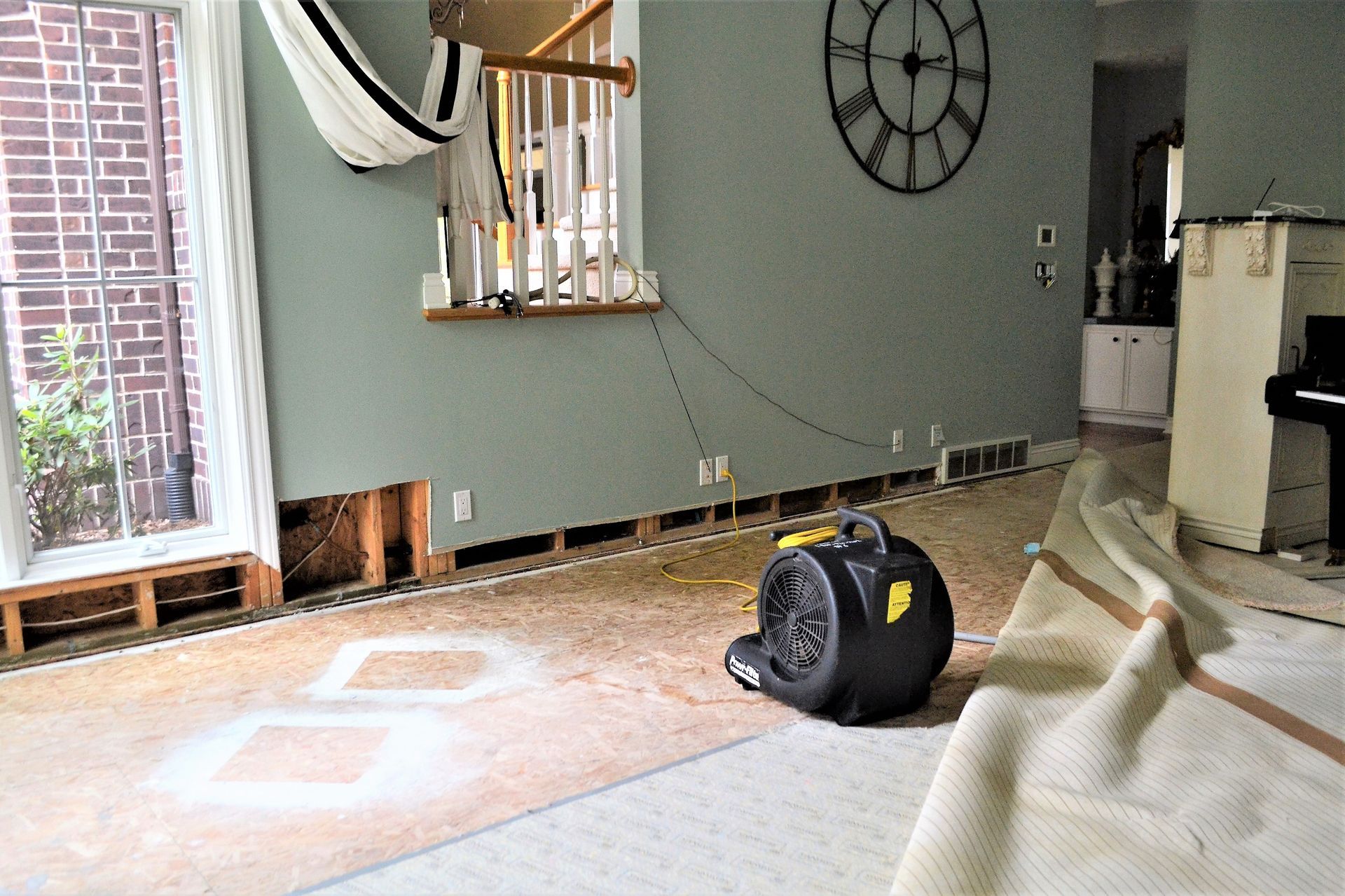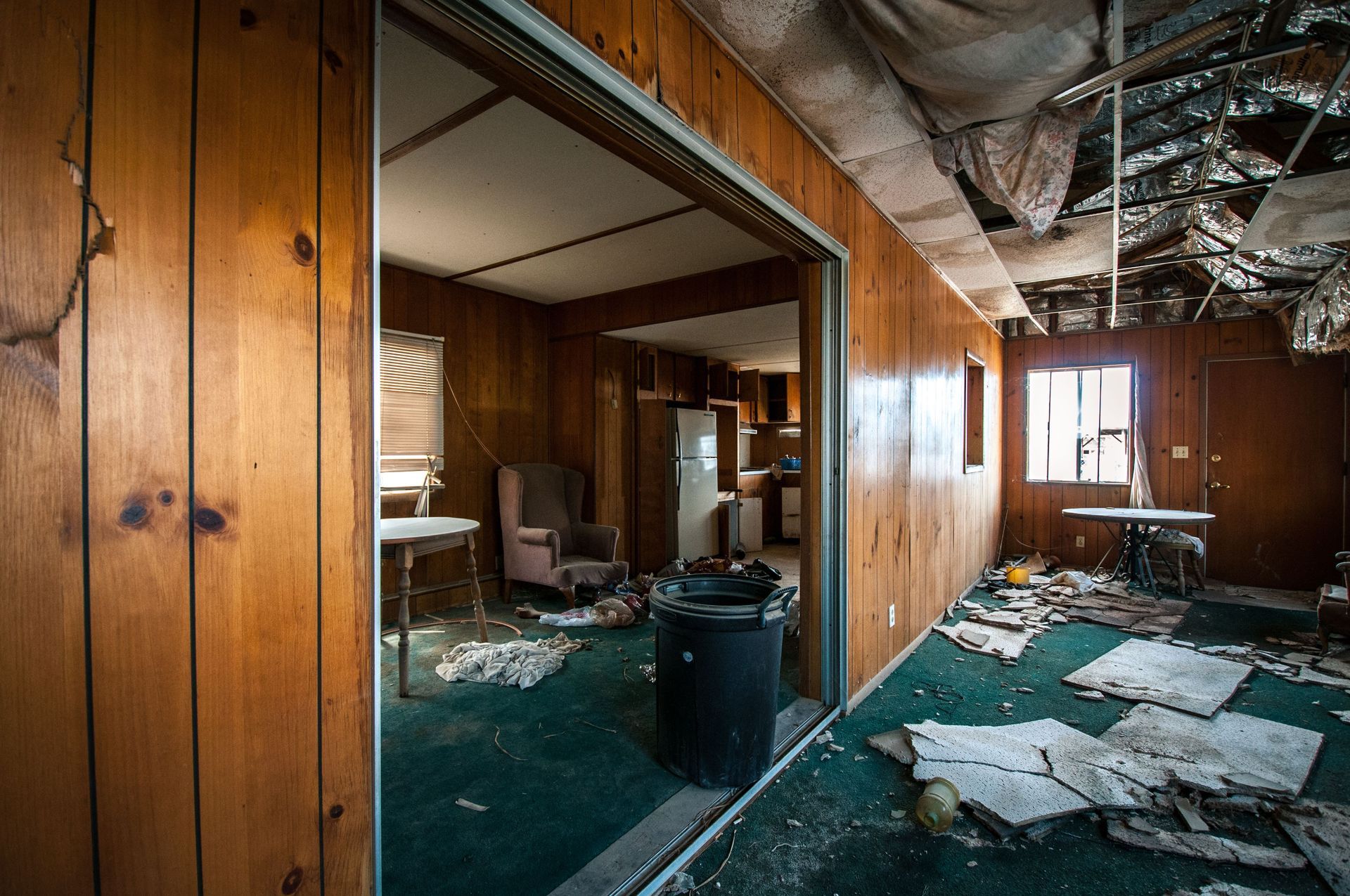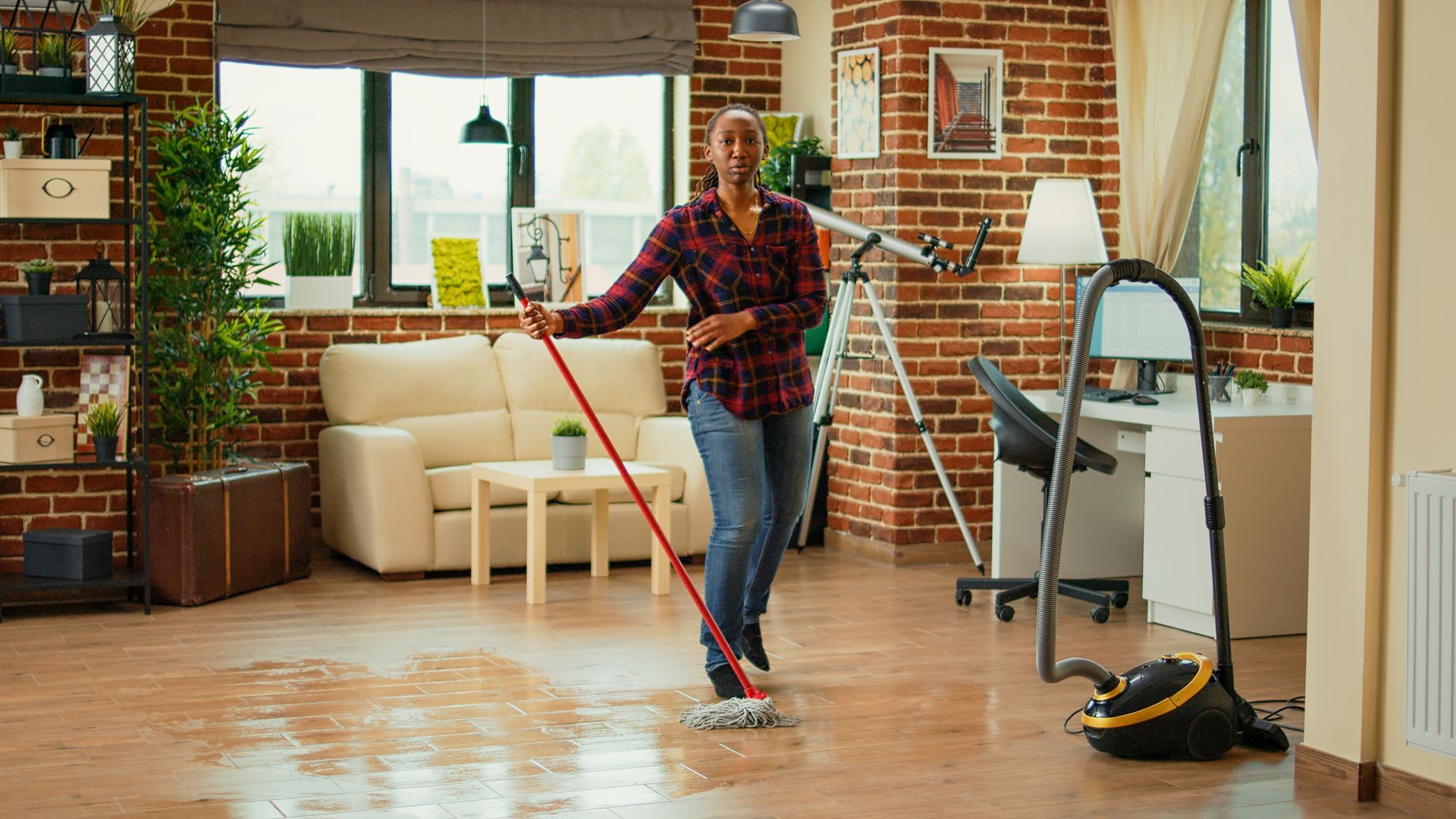Cost of Water Damage Restoration: Your Guide to Budgeting for the Unexpected Expenses
Water damage can strike unexpectedly, leaving homeowners facing both immediate repairs and long-term consequences. Understanding the cost of water damage restoration is essential for effective financial planning and budgeting for these unforeseen expenses. These costs can vary significantly, ranging from a few hundred dollars for minor issues to several thousand for extensive damage, depending on the severity and type of water involved.
When budgeting for water damage restoration, homeowners should consider various factors, including the cost of professional services, materials needed for repairs, and potential temporary housing expenses if the home becomes uninhabitable. By planning ahead and maintaining an emergency fund, they can be better equipped to handle these unexpected financial burdens without undue stress.
Ultimately, taking proactive steps in financial planning can mitigate the impact of water damage on a household's budget. With proper awareness and preparation, homeowners can navigate the costs associated with restoration while safeguarding their finances against future surprises.
Understanding Water Damage
Water damage can occur for various reasons and can lead to significant issues if not addressed promptly. Knowing the types of water damage and how to assess its extent is crucial for effective restoration and budgeting.
Categories of Water Damage
Water damage is generally classified into three categories, which help determine the required response and restoration process.
- Clean Water: This type comes from sources like a broken pipe or a leaking sink. It is relatively safe to handle and requires immediate intervention to prevent further issues.
- Gray Water: This water may contain contaminants and originates from sources like washing machines or dishwashers. While it's not as dangerous as black water, it can still cause health risks if not treated swiftly.
- Black Water: This is highly contaminated water resulting from sources like sewage backups or natural flooding. It poses serious health risks and demands professional intervention to ensure safe cleanup and restoration.
Each category necessitates a different approach in terms of both restoration techniques and health precautions.
Assessing the Extent of Damage
Accurate assessment of water damage is vital for effective restoration and cost estimation. Homeowners should first identify the source of the water.
Next, they should evaluate how long the area has been affected. The duration of exposure significantly impacts potential damage.
In addition, understanding the affected areas is crucial. For example, damage to structural elements like beams will cost more than cosmetic issues like drywall or carpeting.
Lastly, homeowners should be aware of potential long-term effects. Mold growth can start within 24-48 hours, adding to repair costs significantly. Proper assessment ensures that all necessary repairs are included in the budget.
Factors Affecting Restoration Costs
Various elements play a crucial role in determining water damage restoration costs. Understanding these factors can help homeowners plan and budget more effectively for any unexpected expenses related to water damage.
Type and Extent of Damage
The type of water damage significantly influences restoration costs. Damage can arise from clean water, gray water, or black water, each requiring different handling due to contamination levels.
For instance, gray water, originating from sources like washing machines, may necessitate less extensive repairs than black water from sewage backups. The extent of the damage is also vital; localized issues might require minimal repairs, while widespread damage could indicate significant structural loss.
Estimations suggest restoration costs can range from $3 to $7 per square foot for simple repairs, while complex cases may exceed these rates due to additional restoration needs like structural repairs or mold remediation.
Geographic Location
Geographic location often dictates restoration costs due to the varying labor rates and material costs across different regions. Urban areas may feature higher costs due to increased demand and labor expenses.
Additionally, specific regions might face unique environmental risks, such as high humidity or frequent flooding, leading to more costly restoration efforts.
For example, in flood-prone areas, the risk of mold growth increases, prompting homeowners to invest more in preventative measures and repairs. Local regulations can also impact costs, with certain regions enforcing stricter guidelines that necessitate specialized labor and materials.
Necessary Repairs
Beyond initial water removal, homeowners often face several necessary repairs that contribute to overall costs. These include structural repairs, electrical work, and replacement of damaged materials.
Labor costs generally account for a significant portion of restoration expenses. Skilled labor for specialized tasks, such as mold removal, typically incurs higher rates.
Materials used in the repair process also add to the budget. Choices between premium materials and economical options can shift costs significantly. It is crucial for homeowners to obtain detailed estimates covering all aspects of necessary repairs, ensuring a comprehensive understanding of potential financial obligations.

Estimating Restoration Costs
Estimating the costs associated with water damage restoration involves analyzing various factors. These include the average cost per square foot and the categorization of the damage itself. Understanding these elements is crucial for effective budgeting.
Average Cost Per Square Foot
The average cost of water damage restoration typically ranges from $20.18 to $36.72 per square foot as of January 2025. This figure can fluctuate based on several cost factors, such as the extent of the damage and local market rates.
For instance, minor repairs due to clean water may cost less, while extensive damage from contaminated sources will result in higher expenses. Homeowners should consider using a water damage repair cost calculator to obtain a more personalized estimate based on specific conditions.
Additionally, it’s essential to factor in water extraction costs, which can significantly impact the overall price, especially if immediate action is required to prevent further damage.
Cost by Category of Damage
The cost of restoration can also vary widely based on the category of damage involved. Water damage is usually classified into three categories: clean water, gray water, and black water.
- Clean Water: This is the least expensive type to repair, ranging from $3 to $7 per square foot. It involves damage from pipe leaks or rainwater.
- Gray Water: Caused by water from appliances or sinks, this can cost between $7 to $15 per square foot due to the need for thorough cleaning and sanitation processes.
- Black Water: This category encompasses sewage or other highly contaminated water, with costs typically ranging from $15 to $30 per square foot. The complexity of removal and the potential health risks involved drive these prices higher.
Understanding these categories helps homeowners effectively plan for potential restoration expenses after water damage.
Insurance and Financial Assistance
Navigating insurance coverage is crucial for homeowners dealing with water damage. Understanding the types of coverage available can help alleviate financial stress when unexpected repairs arise.
Homeowners Insurance Coverage
Homeowners insurance typically covers sudden and accidental water damage, such as from burst pipes or appliance failures. It is essential for homeowners to review their policy details to understand what is included in their coverage.
Many policies include a deductible, meaning the homeowner pays a set amount before insurance kicks in. Common payout averages range between $7,000 and $12,514, depending on the extent of damage and policy terms. Homeowners should document damages thoroughly and report claims promptly to ensure swift processing.
Flood Insurance Policies
Standard homeowners insurance may not cover flood damage. Homeowners in flood-prone areas should consider obtaining separate flood insurance policies. These policies specifically address damage from rising water, including storm surges and heavy rain.
Flood insurance policies often have waiting periods before coverage takes effect, so planning ahead is vital. Homeowners are encouraged to calculate potential costs and assess their risks based on location. The National Flood Insurance Program (NFIP) provides guidance on available options to help them make informed decisions.

Steps in Water Damage Restoration
The water damage restoration process consists of several critical steps that ensure the affected area is returned to its pre-damage condition. Each phase is crucial for effectively managing water damage and preventing further issues, such as mold growth.
Initial Inspection and Water Removal
The restoration process begins with a thorough inspection of the affected area. This allows professionals to assess the extent of the damage and identify the source of the water intrusion. During this phase, they also classify the type of water involved—clean, gray, or black—each requiring a different approach.
Once the inspection is complete, water extraction is performed using specialized equipment. Heavy-duty pumps and wet vacuums remove standing water quickly to minimize damage. This step is vital since delaying water removal can lead to structural damage and increase the likelihood of mold development. The quicker the water is removed, the better the outcome for the restoration.
Drying and Dehumidification
After the initial water removal, drying and dehumidification work begins. Industrial fans and dehumidifiers are employed to ensure all moisture is extracted from floors, walls, and other surfaces. This stage is crucial as hidden moisture can lead to mold growth.
Monitoring equipment is often used to track moisture levels throughout the drying process. This ensures that areas of concern receive focused attention. Thorough drying is not only about comfort but also about safeguarding the home from future problems.
Cleaning and Sanitizing
Once everything is dry, the cleaning and sanitizing phase commences. This involves cleaning affected materials and surfaces to remove debris, contaminants, and odors. Professionals often use disinfectants to ensure any harmful bacteria or mold spores are eliminated.
In cases involving contaminated water, extensive cleaning is necessary to restore safety. This may include the disposal of affected materials that cannot be adequately cleaned, such as carpets or drywall. The goal is to create a safe, sanitized environment, free from potential health risks.
Final Restoration Work
The final stage of water damage restoration involves repair and restoration work. Depending on the extent of the damage, this may include replacing drywall, flooring, or other structural elements. Skilled professionals handle this work to ensure building integrity and aesthetic quality.
Additionally, homeowners may wish to consider upgrading certain features during this phase. For example, installing waterproof materials can help prevent future incidents. This proactive approach enhances the home's resilience against potential water damage, safeguarding homeowner investments over time.

Preventing Future Water Damage
Taking proactive measures is essential for homeowners looking to prevent future water damage. Regular maintenance and the installation of protective devices can significantly reduce the risk of costly repairs.
Proactive Home Maintenance
Regular home maintenance is key to minimizing the risk of water damage. Homeowners should routinely inspect their plumbing systems, checking for leaks around pipes, faucets, and toilets. Addressing small leaks promptly can prevent them from escalating into significant problems.
Gutters should be cleaned and maintained to ensure proper drainage, directing rainwater away from the home’s foundation. Homeowners can also consider performing regular inspections of basements for signs of moisture or mold.
In addition, keeping an eye on the outdoor landscape can help. Draining systems should be clear of debris, and grading around the foundation should slope away from the house. Investing in basement waterproofing can also safeguard against flooding and moisture accumulation.
Installing Protective Devices
Installing protective devices can provide an added layer of security against water damage. A sump pump is one of the most effective tools for homeowners, as it helps remove excess water from basements during heavy rainfall. Regular maintenance of sump pumps is necessary to ensure they function optimally when needed.
Another useful device is a water alarm system. These alarms detect leaks or rising water levels and alert homeowners before significant damage occurs. Placing these alarms in strategic areas—such as near water heaters, washing machines, and basements—can help catch issues early.
By planning for these preventive measures, homeowners can better protect their properties and reduce the risk of unexpected expenses associated with water damage.
The Impact of Delaying Repairs
Delaying water damage repairs can significantly increase overall costs. The initial problem may appear minor, but it can escalate quickly into a larger issue.
Mold Growth
One of the primary concerns is mold. Mold remediation cost can vary, but it is often high due to the need for specialized professionals. Mold can develop within 24-48 hours, leading to further complications.
Structural Repairs
Neglecting water damage can result in structural issues. Over time, weakened structures require more extensive repairs, raising costs and prolonging restoration.
Ceiling and Drywall Repair
Water can seep into ceilings and walls. If repairs are postponed, ceiling repair and drywall repair become necessary. The longer one waits, the more extensive these repairs can be.
Cosmetic Damage
Aesthetic issues such as peeling paint or warped flooring may arise. Addressing cosmetic damage late can lead to costly renovations.
Electrical Damage
Water exposure can also affect electrical systems. Ignoring this risk can lead to higher expenses from necessary electrical rewiring or system replacements.
Proactive intervention can minimize these potential costs. Addressing issues promptly leads to more efficient solutions and significant savings. Ignoring water damage will only complicate the restoration process and increase financial strain.
Hiring Professionals vs. DIY Restoration
When dealing with water damage, homeowners face a crucial decision: whether to attempt restoration themselves or hire professionals. This choice can significantly impact both the effectiveness of the restoration and the overall costs involved.
Evaluating the Scope for DIY
Homeowners should assess the extent of water damage before choosing the DIY route. Minor issues, like a small leak, can often be managed with simple tools and household items. For example, homeowners can tackle water cleanup using towels and fans to dry the area
Frequently Asked Questions
Water damage restoration can be a complex process, and understanding the costs involved is crucial for effective budgeting. Homeowners often have specific questions regarding estimation, average costs, and financial planning strategies to prepare for unexpected expenses related to water damage.
How can homeowners estimate the overall cost of water damage restoration?
Homeowners can start by assessing the extent of damage and the type of water involved. Clean water issues typically cost less to restore compared to gray or black water damage. It's advisable to contact restoration professionals for evaluations and quotes to get a more accurate estimate.
What are the average costs per square foot for water damage restoration services?
The average costs per square foot vary based on the type of water damage. Clean water damage may range from $3 to $4 per square foot, while gray water can cost between $4 and $7 per square foot. Black water, which poses higher health risks, typically ranges from $7 to $7.50 per square foot to clean up.
Why does water mitigation often come with a significant expense?
The expenses associated with water mitigation arise from the need for specialized equipment, skilled labor, and materials. Time-sensitive repairs are often necessary to prevent further damage and mold growth, adding to the overall cost of restoration.
Can you explain the factors that influence the pricing of water damage repair services?
Several factors influence pricing, including the extent of damage, the type of water, and the materials affected. Geographic location also plays a role, as labor and material costs can vary widely across different regions.
Is purchasing a property with pre-existing water damage a financially sound decision?
Purchasing a property with pre-existing water damage can be risky. Homebuyers should conduct thorough inspections and obtain estimates for repair costs before making such a decision. It's crucial to factor in potential expenses against the property's overall value.
What financial planning strategies can assist homeowners in preparing for water damage emergencies?
Homeowners can consider setting up an emergency fund specifically for home repairs. Additionally, investing in proper insurance coverage and maintaining a home maintenance budget can provide financial protection against unexpected water damage. Regularly reviewing policies and coverage limits can also ensure adequate preparedness.
You might also like
DryMax Restoration Blogs




